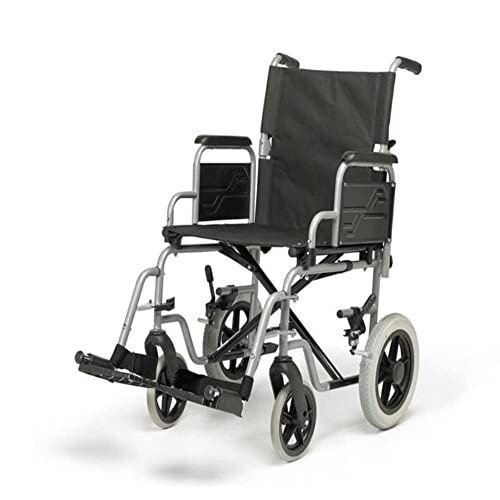What Is The Future Of Mobility Scooters Be Like In 100 Years?
Mobility Scooters: A Comprehensive Guide
Mobility scooters have ended up being an important mode of transportation for many people facing mobility obstacles. This short article checks out the numerous aspects of mobility scooters, including their types, advantages, features, and a guide for prospective buyers.
Understanding Mobility Scooters
Mobility scooters are electrically powered gadgets designed for individuals with minimal mobility. They provide a way of transport for individuals who may have trouble walking however still desire to maintain their independence. They come in different styles and features to cater to a wide variety of requirements.
Types of Mobility Scooters
Mobility scooters can generally be classified into 3 primary types:
Type
Description
Best For
Compact Scooters
These are small and lightweight, ideal for indoors and short journeys.
Users with restricted storage space or those who travel typically.
Mid-size Scooters
A balance between portability and stability, ideal for both indoor and outdoor usage.
Those who need to cover a range of terrains.
Sturdy Scooters
Big and robust, designed for rugged outdoor usage and much heavier people.
Users requiring additional weight capability or going off-road.
Secret Features of Mobility Scooters
The choice of mobility scooter often depends on the functions that align with specific needs. Here are a few of the essential features to consider:
Weight Capacity: Mobility scooters come with different weight limits. It is important to select a scooter that can sufficiently support the user's weight.
Variety: The range a scooter can take a trip on a single charge differs. Depending upon user requirements, one may go with scooters with a variety of up to 40 miles.
Speed: Most mobility scooters can reach speeds between 4 to 8 miles per hour. Consider what speed is comfortable and safe for the intended environment.
Turning Radius: A compact turning radius is necessary for indoor use, enabling for much easier navigation in tight areas.
Battery Type: The kind of batteries used can impact the scooter's efficiency. Lead- best mobility scooters uk and lithium-ion batteries are the most common.
Advantages of Using Mobility Scooters
The advantages of mobility scooters extend beyond just transportation. Some key benefits consist of:
Independence: Users can browse their environment without relying on caretakers, promoting independence and confidence.
Health Benefits: Using a scooter can encourage outside activity, leading to physical and mental health enhancements by reducing sensations of seclusion.
Convenience: Scooters can easily be run in various environments, whether inside your home, in shopping malls, or outdoors.
Essential Considerations When Buying a Mobility Scooter
When acquiring a mobility scooter, a number of considerations can help ensure that you pick the right model:
Assess Individual Needs:
- Mobility level: Consider just how much support the individual will need.
- Series of usage: Determine where the scooter will mostly be used (inside, outdoors, on rough surfaces, and so on).
Test Drive:
- Always test drive several designs to find an ideal fit. Pay attention to convenience, ease of steering, and the scooter's responsiveness.
Review Safety Features:
- Look for scooters with appropriate security functions like lights, indications, and anti-tip styles.
Inspect Warranty and Service Options:
- A reliable warranty and readily available service alternatives are essential for long-lasting use.
Frequently Asked Questions about Mobility Scooters
**1. How quickly do mobility scooters go?Mobility scooters normally have speeds varying from 4 to 8 miles per hour, with a lot of designed for safety instead of high-speed travel. 2. Are there weight constraints on mobility scooters?Yes, mobility
scooters feature particular weight limitations, typically ranging from
250 pounds to over 500 pounds, depending on the model. 3. Can mobility scooters be utilized indoors?Certain models, particularly compact scooters, are specifically developed for
**indoor usage and are easier to steer in tight spaces. 4. How typically do the batteries need to be replaced?Battery life can differ based on usage, however normally, with appropriate care, batteries may last in between 1 to 3 years before requiring replacement
**. 5. Are mobility scooters covered by insurance?Coverage can differ, however some insurance coverage strategies, consisting of Medicare and Medicaid, may cover part of the expense. It's recommended to consult specific insurance coverage companies. Mobility scooters function as a
important tool for lots of individuals, allowing them to maintain
their liberty and self-reliance. By understanding the various types and features of mobility scooters, individuals can make informed decisions tailored to their specific requirements.
Whether used for errands, socializing, or leisurely activities, mobility scooters can improve the lifestyle for those with mobility restrictions. Buying a mobility scooter is a decision that can considerably impact an individual's life. For that reason, people need to carefully examine their alternatives and select a design that best aligns with their way of life and mobility requirements
.  ******
******